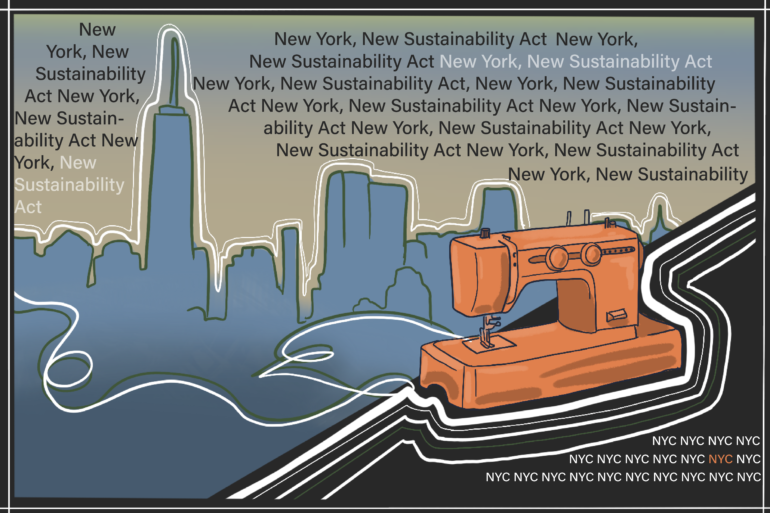London. Milan. Paris. New York.
These are the cities that come to mind when the term “fashion hub” is spoken. Rich with history, these vast concrete jungles are home to some of the most iconic revolutions of style and pop culture. From Christian Dior’s New Look in the 50’s to Vivenne Westwood’s emergence of punk in the ’70s, fashion has dramatically changed and evolved with the world. Now, as we solidly stand in the 2020s, sustainability is more of an important issue than ever.
As general awareness about the irreparable destruction of the planet increases, consumers are more conscious of the products they buy, and ethical fashion is in high demand. While fast fashion will never truly go away, the demand has shifted and more people are looking to do their part for a sustainable future, including buying sustainable fashion.
Earlier this month, New York legislation passed an act that would make this demand for sustainable fashion even more of a reality. The act requires that all apparel and footwear companies must set targets to reduce greenhouse gas emissions and disclose how much and what type of materials they use. In addition, they must report suppliers’ wages and how it compares to local minimum wages. The act also demands that all of this information is disclosed on each companies’ website, making it both public knowledge and easily accessible to shoppers.
Essentially this act will help regulate the nitty-gritty of the fashion industry, as well as encourage companies to make more ethical choices when buying, sourcing, and creating their products. One of the biggest problems right now is the mystery surrounding the production of clothing, textiles and footwear. Some companies say they take sustainable measures in the manufacturing process, but what does that really mean? Is it greenwashing, or does the company actually want to enact change? The answer is almost never clear. Most companies don’t have statistics about their impact on the planet and the ones that do have very little.
Exempt from this is Stella McCartney, who has been a pioneer of the sustainability movement for decades. Her website has a page called “measuring our impact”, which clearly lays out statistics about her company’s sourcing and production habits. She also includes annual Eco Impact Reports that analyze her brand’s impact in extensive detail. Despite being based in London, she was the first designer to endorse the act, which will encourage more designers to speak up as well. Hopefully, other brands that follow this act will look to McCartney as an example of transparency.
With New York as the only city with these restrictions, what does it mean for its future as a fashion hub? With the incentive to be more transparent, companies in New York will adopt more sustainable practices, popularizing those specific brands. Ideally, brands will start to look at their companies from a different perspective and actually assess what materials go into their products, as well as the ethics behind the scenes. As a leader in fashion, the goal is that other major cities will follow suit, turning the tide for sustainability and making the fashion industry less harmful to the environment.
Words by: Caroline Tetlow.
Graphic by: Caroline Tetlow.

